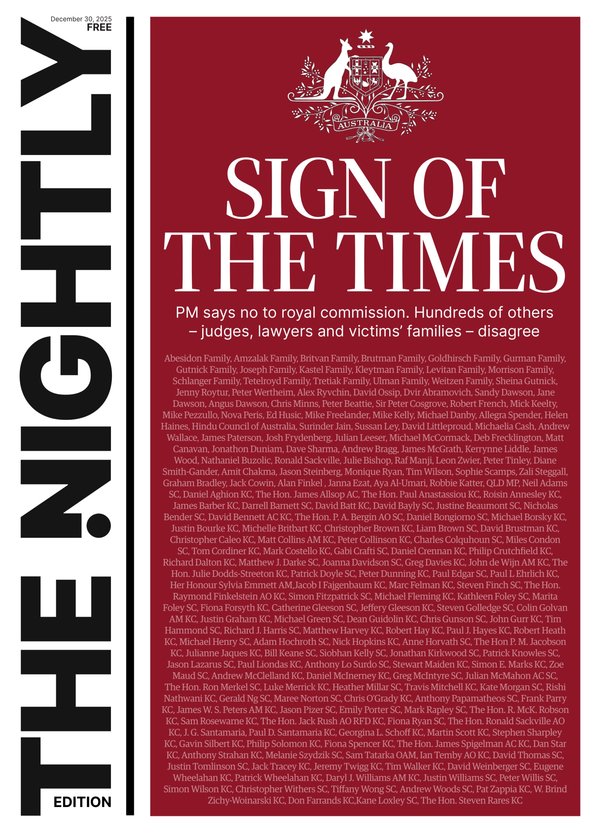Nick Bruining Q+A: How a lifetime annuity works with Centrelink’s age pension test

Question
I recently met with a financial adviser in anticipation of my retirement at the end of the year.
I am a single female with no children. I live in my own home and have managed to save about $750,000 in super and term deposits. My base cost of living is about $35,000 a year.
Sign up to The Nightly's newsletters.
Get the first look at the digital newspaper, curated daily stories and breaking headlines delivered to your inbox.
By continuing you agree to our Terms and Privacy Policy.Part of the strategy suggested was to invest $200,000 into a lifetime annuity. For this, I would receive an income of close to $10,300 a year, indexed at the annual inflation rate for the rest of my life.
I want to keep things simple and I am concerned about running out of money later in life when I may need aged care.
She has suggested that I should keep about $20,000 in the bank and the balance of the money in an account-based pension.
What do you think of this plan?
Answer
On the face of it, and simply based on the information in your question, I think this looks to be a very sensible use of the available capital.
The use of an annuity indicates that part of the overall strategy is for you to access a part Centrelink age pension.
Under the asset means test, only 60 per cent of a Centrelink-complying annuity is assessed, meaning that after allowing $20,000 for fixed personal assets you would have about $690,000 in assessable assets. That translates to a likely age pension of about $73.40 a fortnight — or $1903 a year, plus the annuity income of $10,300.
At the age of 84, the assessable asset value of the annuity will fall to 30 per cent of the invested amount — or by another $60,000, resulting in a further increase of $180 a fortnight by virtue of that recalculation.
Your ABP will be required to pay you 5 per cent of the balance — or about $26,500 a year. All up, that’s a tax-free annual income of more than $37,000 — not including interest on the $20,000 kept in the bank.
As you spend, and if you draw down on the ABP, resulting in the value falling, every $10,000 decline will result in a $30-a-fortnight increase from Centrelink until you reach the full rate of age pension.
Were you to have no money left in the ABP and just the remaining annuity and age pension, your total income today would be about $41,000 a year indexed for life.
If you move into residential aged care later in life, the proceeds of your house sale would cover the refundable accommodation deposit.
Question
A few weeks ago, you answered a question about compulsory super.
I am in my 20s and work in the construction industry, basically assisting with concrete driveways along with others in a team.
My employer asked me to obtain an Australian Business Number when I started and I invoice him monthly for each driveway I work on.
My parents think I should be receiving compulsory superannuation. Are they correct ?
Answer
The fact that you regard your supervisor as an employer is telling. A genuine contracting arrangement for superannuation purposes isn’t established simply because you have an ABN and invoice them for work done.
As a rough guide, if you work for the same company and no others, they direct you on what work to do and when to attend, they provide the materials and, in essence, you are building up their business, not yours, you are almost certainly an employee for superannuation guarantee purposes.
The employer is liable to pay 12 per cent of the gross amount you are paid to a nominated superannuation fund or another Australian Prudential Regulation Authority-regulated fund that complies with the MySuper requirements.
That payment must be made within 28 days of the end of the quarter that the liability accrues. If unpaid, he or she is personally liable for not only the payments, but also additional charges and interest.
When late, the missed payments and penalties are not tax deductible.
Nick Bruining is an independent financial adviser and a member of the Certified Independent Financial Advisers Association

